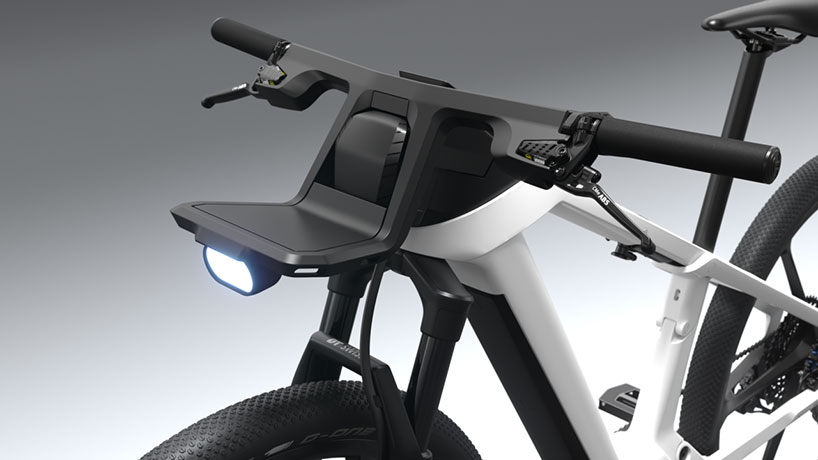Understanding eBikes: A Brief Overview
eBikes, or electric bicycles, represent a modern and eco-friendly mode of transportation that has gained significant popularity in recent years. By integrating an electric motor with a traditional bicycle, eBikes offer numerous advantages over their conventional counterparts. The future of eBikes lies in their potential to revolutionize urban mobility, reduce carbon emissions, and promote a healthier lifestyle.

The Current State of eBikes: Trends and Innovations
eBikes have experienced remarkable advancements in recent years, with several noteworthy trends and innovations shaping their development. One such innovation is smart eBike technology, which incorporates features like GPS tracking, fitness monitoring, and mobile app integration. These smart capabilities cater to tech-savvy users who seek a seamless and connected riding experience.
Another significant trend in the eBike industry is the introduction of swappable batteries. This feature allows riders to quickly exchange depleted batteries for fully charged ones, extending the range and convenience of eBikes. Swappable batteries are particularly beneficial for users who rely on eBikes for long-distance commuting or delivery services.
Improved motor efficiency is another area where eBikes have made strides. Modern eBike motors offer better power-to-weight ratios, ensuring smoother and more efficient performance. These advancements cater to various user needs, from leisurely riders to performance-oriented cyclists, making eBikes an attractive option for a diverse range of consumers.
How to Choose the Right eBike for Your Needs
With the growing popularity of eBikes, selecting the perfect model for your needs can be challenging. Here is a comprehensive guide to help you make an informed decision:
Range: Consider the distance you typically travel and choose an eBike with a sufficient battery range. For instance, the Bosch Active Line eBike offers a range of up to 50 miles on a single charge, making it suitable for daily commuters.
Motor Power: The motor power of an eBike is crucial for tackling inclines and providing smooth acceleration. For example, the Specialized Turbo Levo boasts a powerful 2.1 motor, delivering impressive performance on various terrains.
Frame Style: Select a frame style that suits your riding preferences and comfort level. For instance, step-through frames are ideal for urban commuting, while mountain bike-style frames are better suited for off-road adventures.
Price: eBikes are available at various price points, so it’s essential to determine your budget before making a purchase. High-end models like the Trek Powerfly FS 9 may offer advanced features, but more affordable options, such as the Cannondale Synapse Neo, still provide excellent performance and value.
By considering these factors, you can find an eBike that meets your needs and enhances your riding experience.

The Future of eBikes: Design and Technology
As eBikes continue to gain popularity, the future of eBike design and technology promises exciting innovations that could revolutionize urban transportation. Here are some potential developments to look out for:
Lightweight Materials: The use of advanced materials, such as carbon fiber and titanium, can significantly reduce the weight of eBikes, making them more agile and energy-efficient. For instance, the Haibike Xduro Nduro Race features a carbon frame, reducing the overall weight and improving performance.
Advanced AI Integration: AI technology can enhance eBike functionality, providing features like predictive maintenance, intelligent assistance, and real-time performance tracking. For example, the Cowboy 4 eBike incorporates AI-powered navigation and automatic gear shifting for a seamless riding experience.
Improved Energy Efficiency: Future eBikes may incorporate advanced energy recovery systems, such as regenerative braking and solar-powered charging, to extend battery life and reduce the environmental impact. The Greentrike Solar eBike already showcases the potential of solar-powered eBikes, harnessing the sun’s energy for a cleaner and more sustainable ride.
These innovations have the potential to transform urban transportation, offering eco-friendly, cost-effective, and efficient mobility solutions for city dwellers. By embracing these advancements, the future of eBikes looks brighter and more promising than ever before.
The Role of eBikes in Sustainable Urban Mobility
As urban populations grow, cities face increasing challenges related to traffic congestion, air pollution, and carbon emissions. eBikes offer a promising solution to these issues, promoting sustainable urban mobility and contributing to healthier, greener cities. Here’s how:
Reducing Traffic Congestion: eBikes take up less space than cars, making them an ideal choice for commuting in densely populated areas. By encouraging more people to switch from cars to eBikes, cities can alleviate traffic congestion and improve overall transportation efficiency. Successful eBike-sharing programs, such as Lime and Bird, have already made a significant impact on city infrastructure and commuting habits.
Minimizing Carbon Emissions: eBikes produce zero direct emissions, making them an environmentally friendly alternative to cars and public transportation. By promoting eBike adoption, cities can significantly reduce their carbon footprint and contribute to global efforts to combat climate change. For instance, the Copenhagenize Design Company has helped numerous cities around the world implement eBike-friendly infrastructure and policies.
Promoting Active Lifestyles: eBikes offer a low-impact, accessible form of exercise that can help users maintain a healthy lifestyle. By encouraging more people to choose eBikes over cars, cities can promote active transportation and improve public health. eBike manufacturers, like VanMoof, focus on designing stylish, user-friendly eBikes that cater to a wide range of fitness levels and preferences.
The future of eBikes holds immense potential for sustainable urban mobility. By embracing eBike technology and integrating it into city infrastructure, urban areas can become healthier, greener, and more efficient. As governments and cities around the world recognize the benefits of eBikes, we can expect to see increased support and investment in eBike-friendly policies and initiatives.

Government Policies and Incentives for eBike Adoption
As the future of eBikes becomes increasingly prominent, governments and municipalities play a crucial role in encouraging eBike adoption. By implementing supportive policies and incentives, they can help reduce traffic congestion, minimize carbon emissions, and promote sustainable urban mobility. Here are some successful initiatives from around the world:
Tax Credits and Subsidies: Governments can offer tax credits or subsidies to individuals or businesses purchasing eBikes. For example, the German government provides a subsidy of up to €1,000 ($1,100) for eBike purchases, while the Canadian province of Quebec offers a rebate of up to CAD 500 ($385) per eBike. These incentives make eBikes more affordable, thereby increasing their appeal to potential buyers.
Dedicated Cycling Lanes: Cities can invest in dedicated cycling lanes and infrastructure to ensure the safety and convenience of eBike users. For instance, Copenhagenize Design Company has helped numerous cities around the world implement eBike-friendly infrastructure, such as separated cycling lanes and secure parking facilities. By prioritizing eBike users, cities can create a more inviting environment for eBike adoption and usage.
Public Awareness Campaigns: Governments and organizations can launch public awareness campaigns to educate citizens about the benefits of eBikes and how to use them safely. For example, the PeopleForBikes coalition in the United States promotes eBike awareness through educational resources, events, and advocacy efforts. By increasing public knowledge and understanding of eBikes, governments can help overcome resistance and misconceptions about eBike usage.
As the future of eBikes continues to unfold, government policies and incentives will remain essential in fostering eBike adoption and integration. By learning from successful initiatives worldwide, cities and governments can create a more sustainable, eBike-friendly urban landscape that benefits both individuals and the environment.

Addressing Challenges and Concerns in eBike Integration
As the future of eBikes unfolds, cities and governments must address several challenges and concerns to ensure a smooth transition to eBike-friendly urban landscapes. By proactively addressing these issues, they can create a safe, enjoyable, and sustainable environment for eBike users.
Safety: Ensuring the safety of eBike users is paramount. This can be achieved by implementing measures such as dedicated cycling lanes, traffic calming initiatives, and eBike-specific traffic regulations. For instance, some cities have established cycle streets where eBike riders have priority over motor vehicles. Additionally, promoting safe riding practices through educational campaigns can help reduce accidents and injuries.
Theft: eBikes can be expensive, making them attractive targets for theft. To combat this, cities and governments can invest in secure parking facilities and promote the use of anti-theft devices such as locks and GPS trackers. Encouraging eBike registration and licensing can also aid in recovering stolen bikes and deterring theft.
Infrastructure Limitations: Cities may face infrastructure limitations when integrating eBikes, such as insufficient cycling lanes or charging stations. To overcome this, cities can invest in eBike-friendly infrastructure, repurpose underutilized spaces, and collaborate with private companies to provide charging and parking facilities. For example, the Bosch eBike Charging Stations offer a convenient solution for eBike users to recharge their batteries while on the go.
By addressing these challenges and concerns, cities and governments can create a more inviting environment for eBike users and encourage widespread adoption. By learning from successful initiatives worldwide, they can overcome obstacles and ensure a smooth transition to eBike-friendly cities, ultimately contributing to a more sustainable and enjoyable urban transportation experience.

Preparing for the Future: Skills and Knowledge for eBike Users
As the world embraces eBikes as a sustainable transportation solution, it’s essential for users to acquire the necessary skills and knowledge to make the most of their eBike experience. Here are some tips to help eBike users prepare for the future.
Maintenance: Regular maintenance is crucial for ensuring the longevity and performance of eBikes. Users should learn how to perform routine checks, such as inspecting the brakes, tires, and chains, as well as understanding the importance of battery care. Many eBike manufacturers and retailers offer maintenance guides and resources, making it easy for users to learn these essential skills.
Safe Riding Practices: eBike users should familiarize themselves with local traffic regulations and safe riding practices. This includes wearing appropriate safety gear, such as helmets and reflective clothing, and following traffic signals and signs. Additionally, users should learn how to operate their eBikes safely, including proper braking techniques and maintaining a safe speed.
Staying Informed: The eBike industry is constantly evolving, with new innovations and advancements emerging regularly. eBike users can stay informed about industry developments by following news outlets, attending events, and engaging with online communities. By staying up-to-date on the latest trends and technologies, users can make informed decisions about their eBike purchases and usage.
By acquiring these skills and knowledge, eBike users can ensure a safe, enjoyable, and sustainable transportation experience. As the future of eBikes continues to unfold, users who are well-informed and prepared will be better equipped to navigate the evolving landscape of urban transportation.


